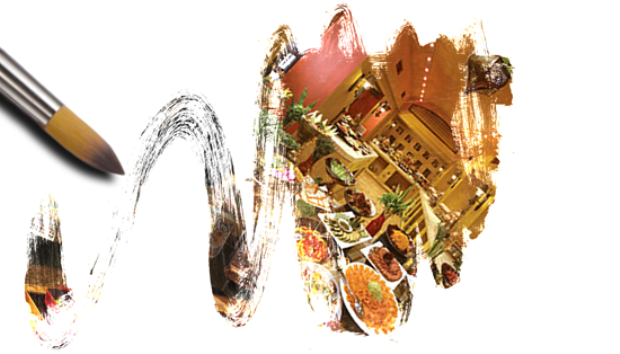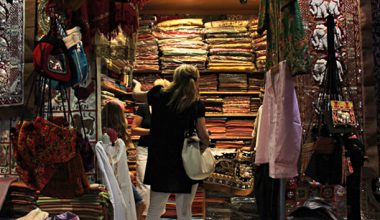Sometimes it doesn't get better than good old home food…
Here in the Emirates, we're often spoiled for choice when it comes to food. As a result of the diversity of nationalities residing in the country we're quite literally exposed to a buffet of cuisines to choose from; from the oh-so-notorious Shawarma to the even more popular Biryani, from Mexican to Chinese, Fast food to not-so-fast food, gourmet to simple cafeteria grub. With all these cuisines it's quite easy to get distracted from traditional fare.
When asked about original Emarati cuisine, we're often stumped. We'll list out the 'generic Arab foods' we tend to know on a more social basis; the Hummous, Tabbouleh, Baba Ghanoush etc., not knowing that in fact none of these crowd-pleasers are authentic UAE grub.
 It's a shame really, that most of us expats aren't as aware of the local food scene as we should be. The name 'Harees' might have a familiar ring to it, but ever savoured the tanginess of Bezar? Or had a bite off the crepe-like Rigag? Didn't think so.
It's a shame really, that most of us expats aren't as aware of the local food scene as we should be. The name 'Harees' might have a familiar ring to it, but ever savoured the tanginess of Bezar? Or had a bite off the crepe-like Rigag? Didn't think so.
Here's the low-down; the UAE, like all other GCC and Pan-Arab nations, stake claim to their own menu. Although many a dish might be interspersed with that of their neighbour's, there are a few dishes the Emiratis can claim to be their own.
THE MAIN COURSES
Traditional Emarati food is (was) the food of the early Bedouins. Fish, lamb and cereals would govern the menu as a result of its geographical location and therefore availability of above-mentioned food groups.
Here are a few of the more well known ones:
* Harees – This kitchen favourite is a wheat-based dish, resembling a porridge-like texture. Laced with chunks of meat (preferably lamb), the harees is left to cook for several hours and finally topped with a blob of clarified butter for that extra flavour.
* Al Majboos – A dish consisted primarily of meat and rice, is a UAE favourite. The meat is cooked first, i.e. boiled with a blend of spices and lime, followed by a vegetable medley usually consisting of potatoes, tomatoes and green peppers; cooked rice as well as saffron are then added to the meat mixture in layers so that the flavours are fully infused.
* Al Madhrooba – This consists of salt-cured fish (known locally as “maleh”) and flour. The fish is washed and then cooked in a pot along wuth spices before flour is added to thicken the mixture into a paste-like texture. Al Madhrooba is then topped with ghee before serving.
* Saloona Bedouya – Is a stew of sorts, this traditional dish is a brilliant concoction of root vegetables and lamb.
Most meals are flavoured with the UAE's very own masala; the Bezar. This spice mix with its heady fusion of cinnamon, cardamom, and a range of other spices is responsible for the flavouring in almost all Emirati dishes.
THE BREADS
Most of the above-mentioned dishes require an accompaniment in the form of bread with which to eat it with. Local versions include:
* Raqaq (flat) Bread – This bread is formed out of soft, unleavened dough that is flattened and baked on a hot iron plate. When the bread is ready, a variety of toppings such as ghee, butter and sugar, cheese or meat gravy is spread onto it.
* Yeast Bread – The dough is made by mixing flour, warm water, yeast and a date paste and then is left to rest for a few hours before being cut into several pieces. Each piece is shaped into a flat circle, fried on both sides in a pan, and finally topped with honey and butter or cheese. This bread is traditionally baked as a special treat during Ramadan.
* Al Chabab Bread – A soft dough is poured into a "tabi" oven, or in a non-stick pan. The dough is flattened into the pan and is cooked like a pancake on both sides. When the bread is ready, it is eaten with ghee and sugar, honey, cheese or any other desirable topping.
DESSERTS
No meal, be it traditional or contemporary, is complete without a sugary treat to satisfy that sweet tooth. Below are a few regional favourites:
* Al Khabeesah – Many Arab nations have their own 'versions' of this dessert, but the Emirati variant is more crumby (as opposed to creamy) due to the presence of roasted flour and cashew nuts. This sweet dish is made from flour heated on a stovetop before the rose water, sugar, ghee and cardamom are added to contribute to this dish's distinct and warming flavour.
* Al Khanfaroosh – Al Khanfaroosh is prepared from a mixture of flour, egg, sugar, yeast, cardamom, saffron and rose water. This aromatic mixture and left to rest, before it is divided into pieces and fried in ghee. The flour is sometimes replaced with rice, where the rice is washed and then left in the sun to dry after which it is finely ground before use.
* Luqiamat – Round doughy dumplings of deep-fried batter, sweetly drizzled in date syrup.
The probable reason we're so unacquainted with traditional fare, is the lack of genuine Emirati restaurants here in the Emirates itself.
We have however hunted down a few hideaways in Dubai that do boast an original Emirati menu:
* Bin Eid restaurant – Abu Hail (+971 (4) 266-3644)
* Al Boom Tourist Village (+9715 (4) 3243000)
* Local House – Bastakiya (+971 (4) 3540705)
So, the next time you're in the mood for 'Arabic,' make it a point to steer away from the generic for a change, and savour some of the more authentic Emirati delights.
– Shaahima Fahim







